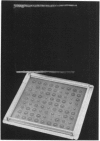Abstract
Large glass plates are used for this modified agar-well diffusion assay method, allowing up to 81 replications on a single plate. With a specially designed agar punch, it is possible to prepare the small agar wells very quickly. The saving in serum resulting from fewer replications of standards with the large plates, and the small volume of the agar wells, makes it economically feasible to use pooled human serum for the standard antibiotic solutions. Methods are described for preparing the standard solutions, and for providing controls for the deterioration of standards and unknowns. Procedures for preparing and maintaining the commonly used assay organisms are presented. Serum specimens are tested directly rather than diluting them to a narrow range of antibiotic concentrations. This is possible because of a procedure for calculations that recognizes the curvilinear relationship between zone sizes and antibiotic concentrations. Adaptation of this method to a number of the commonly used antibiotics is described. With this method, it has been possible to test large numbers of clinical specimens in a minimal time, and with accuracy consistently better than 10%.
Full text
PDF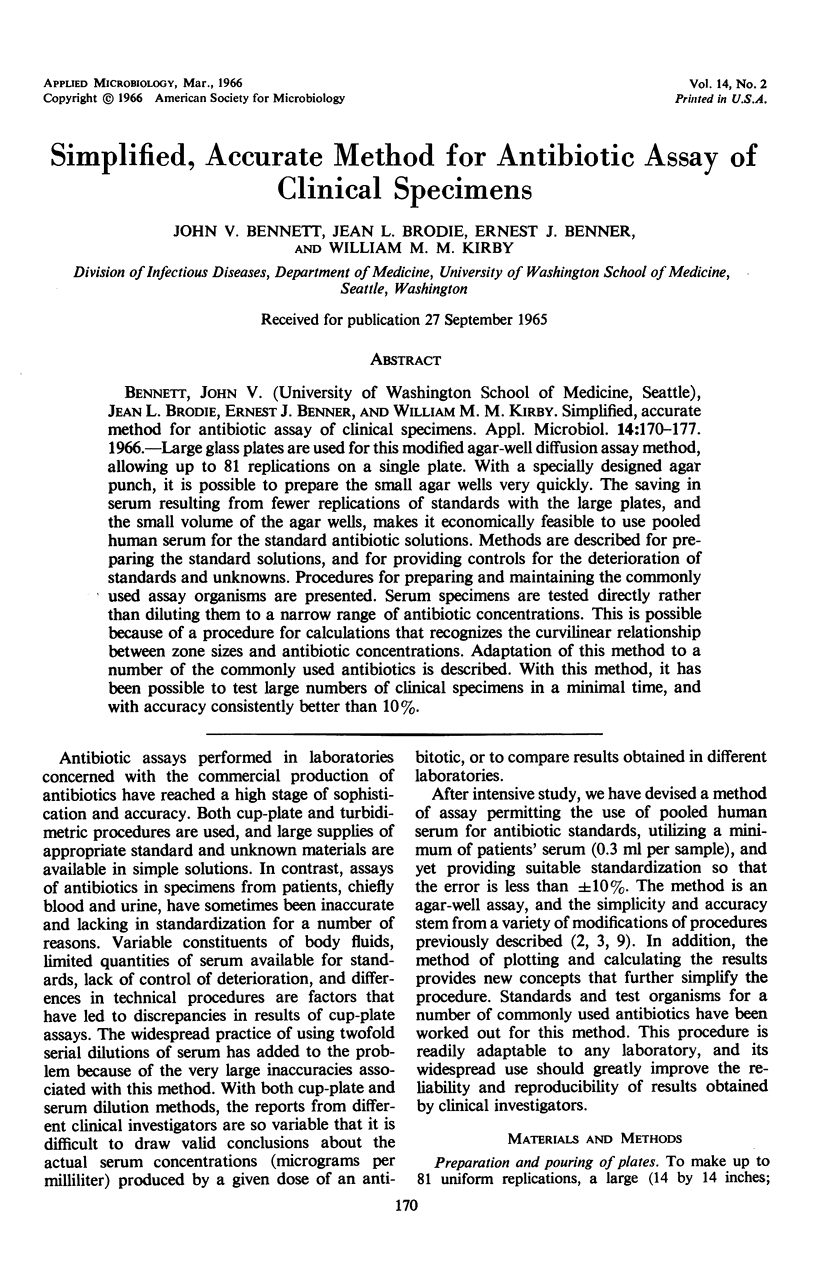
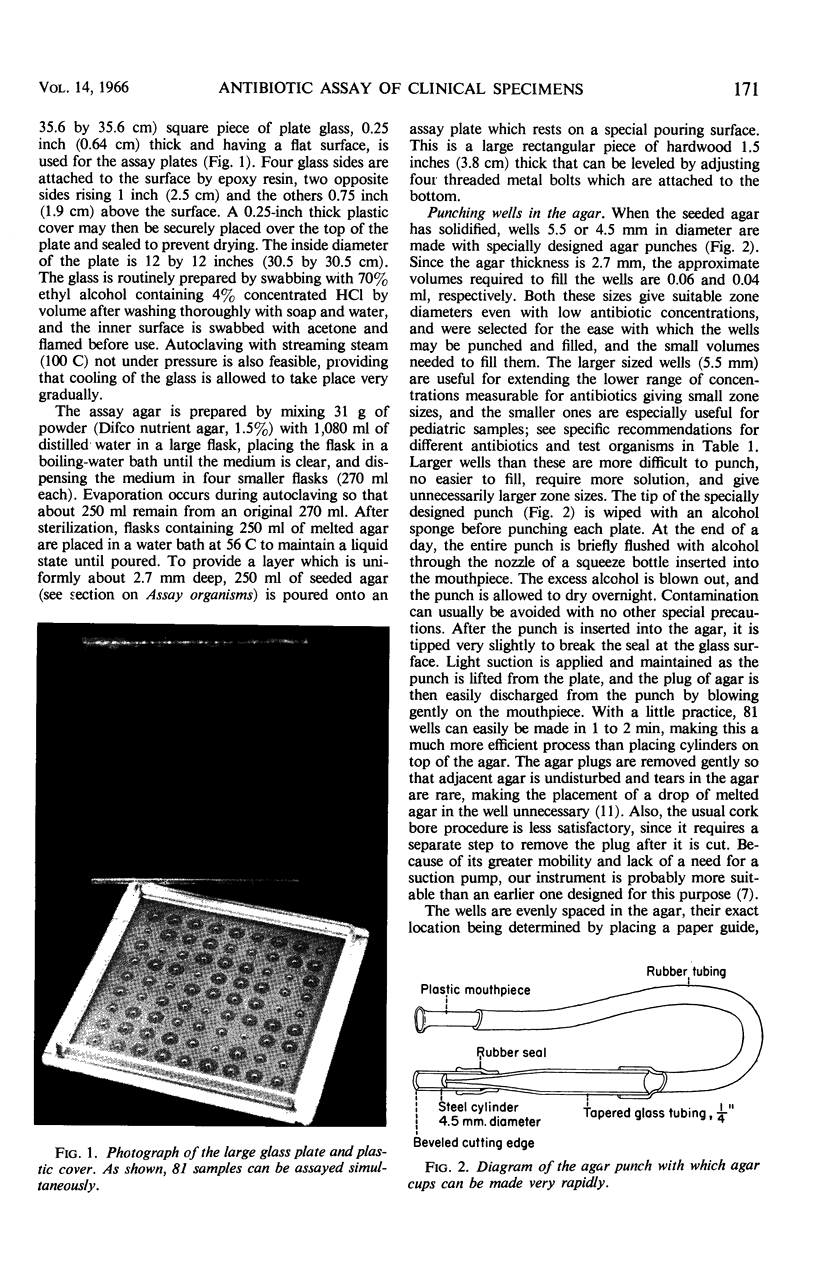
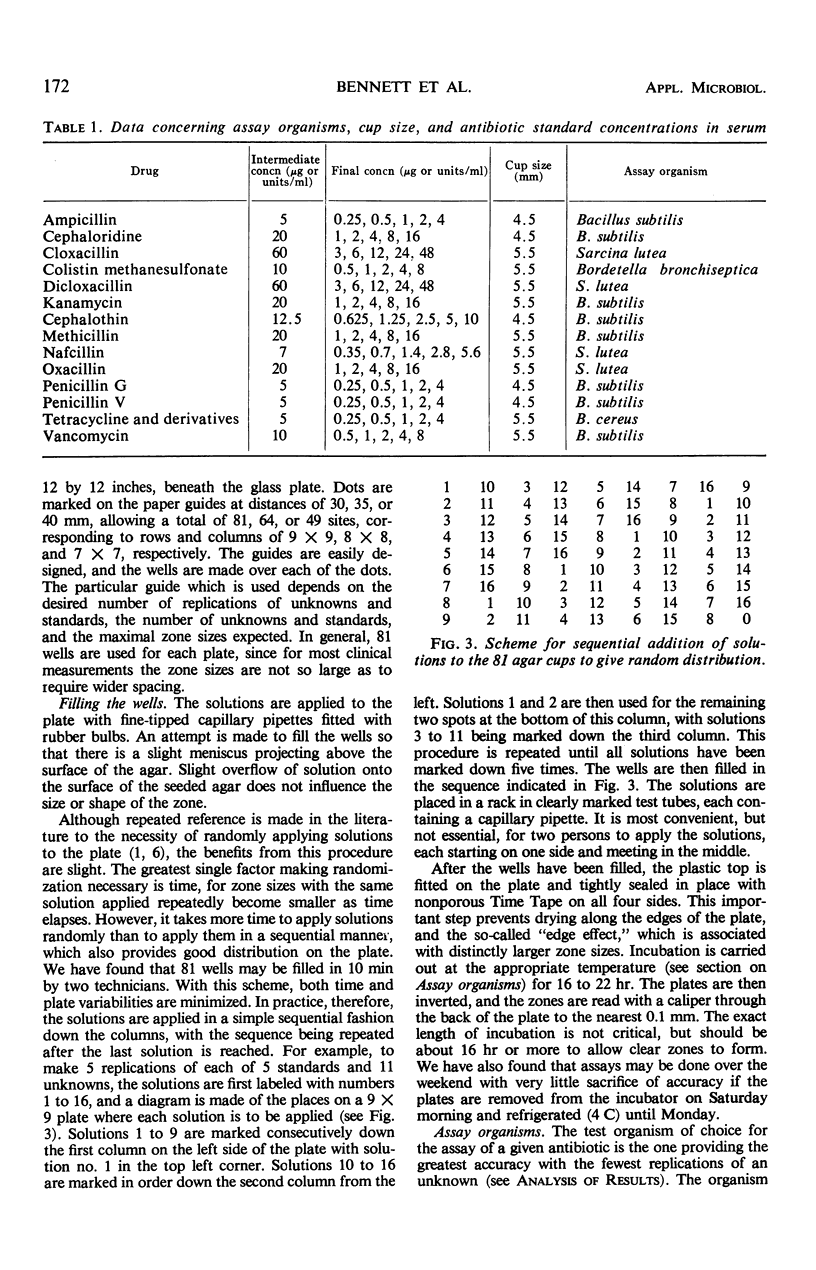
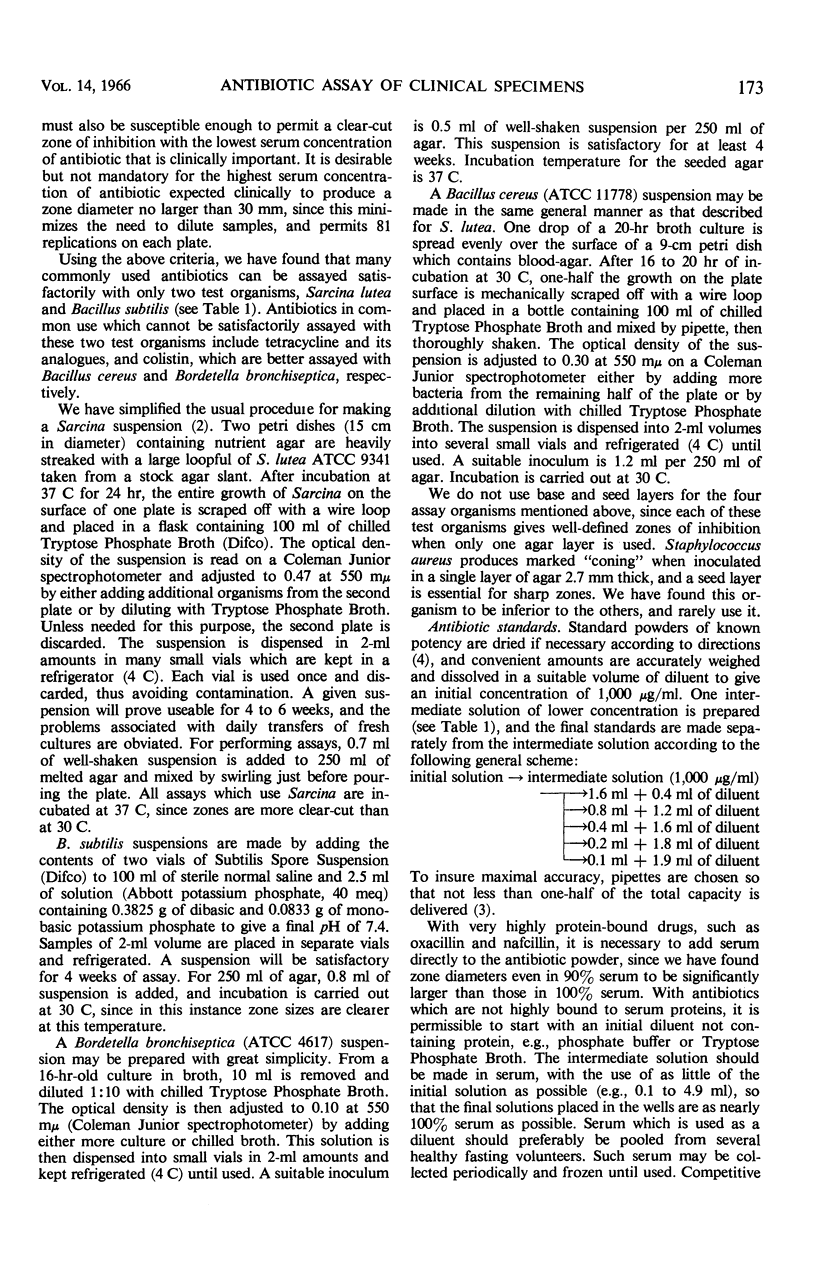
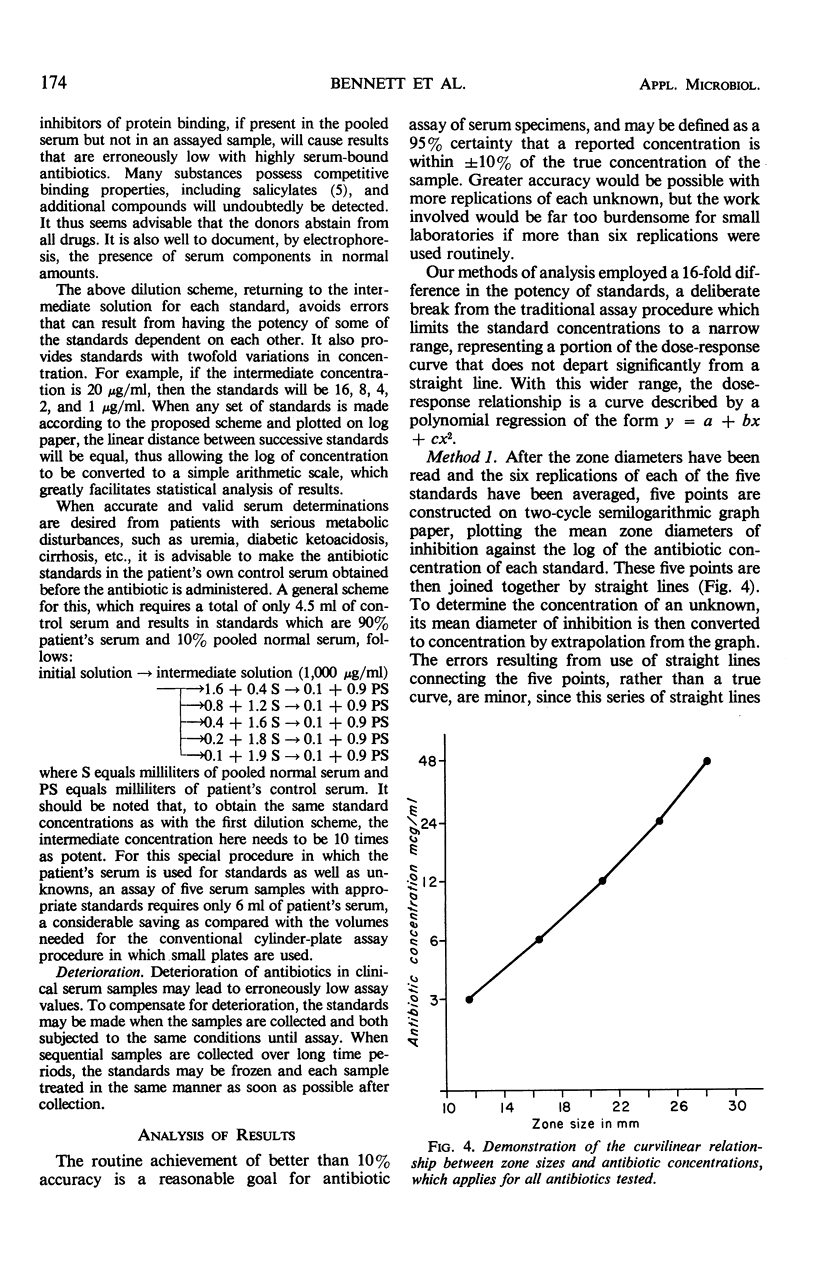
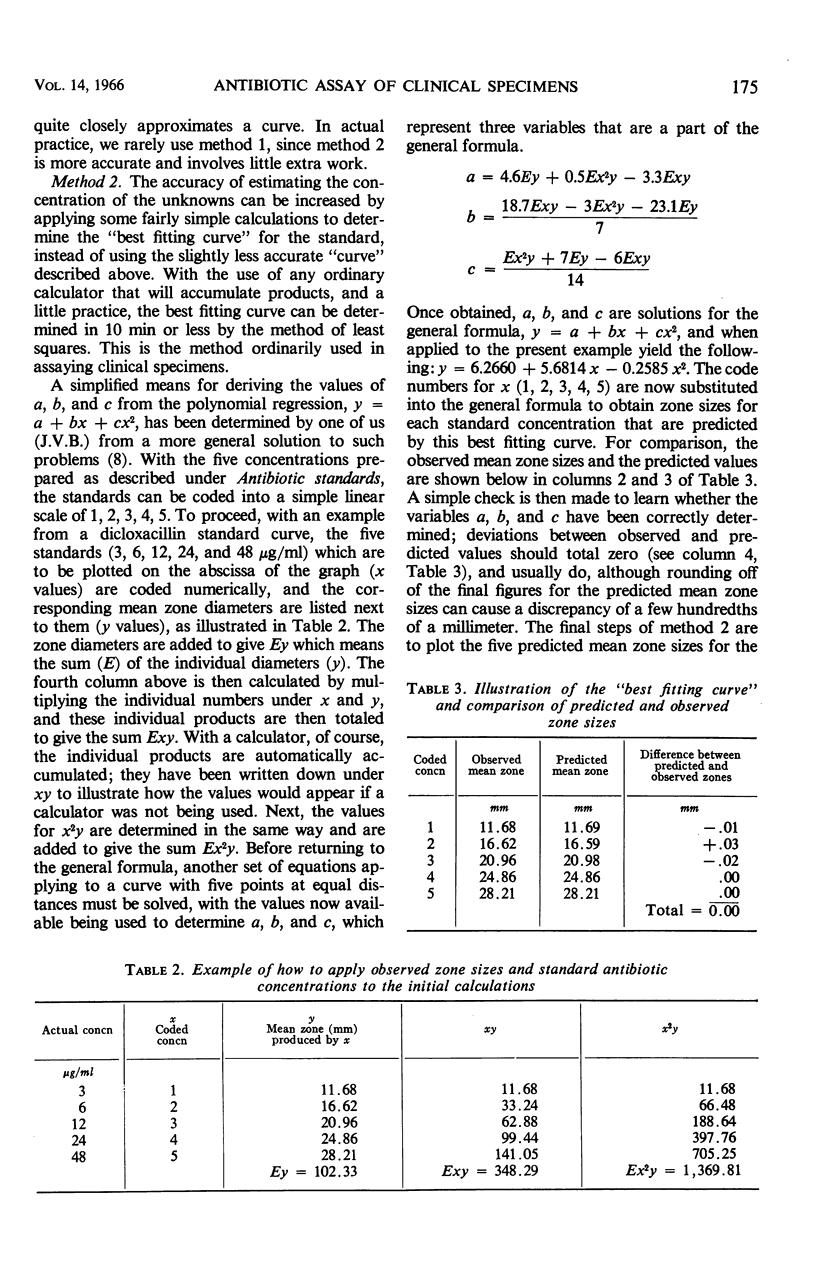
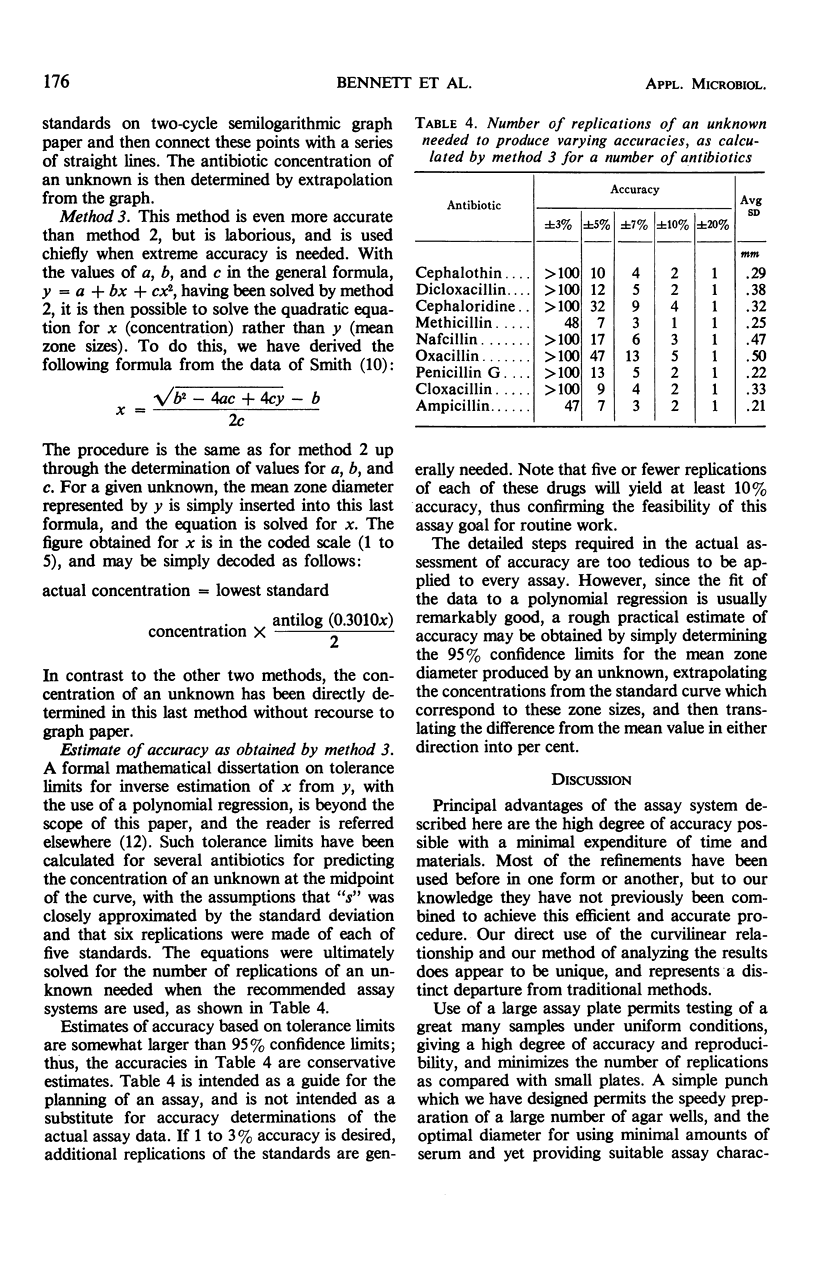
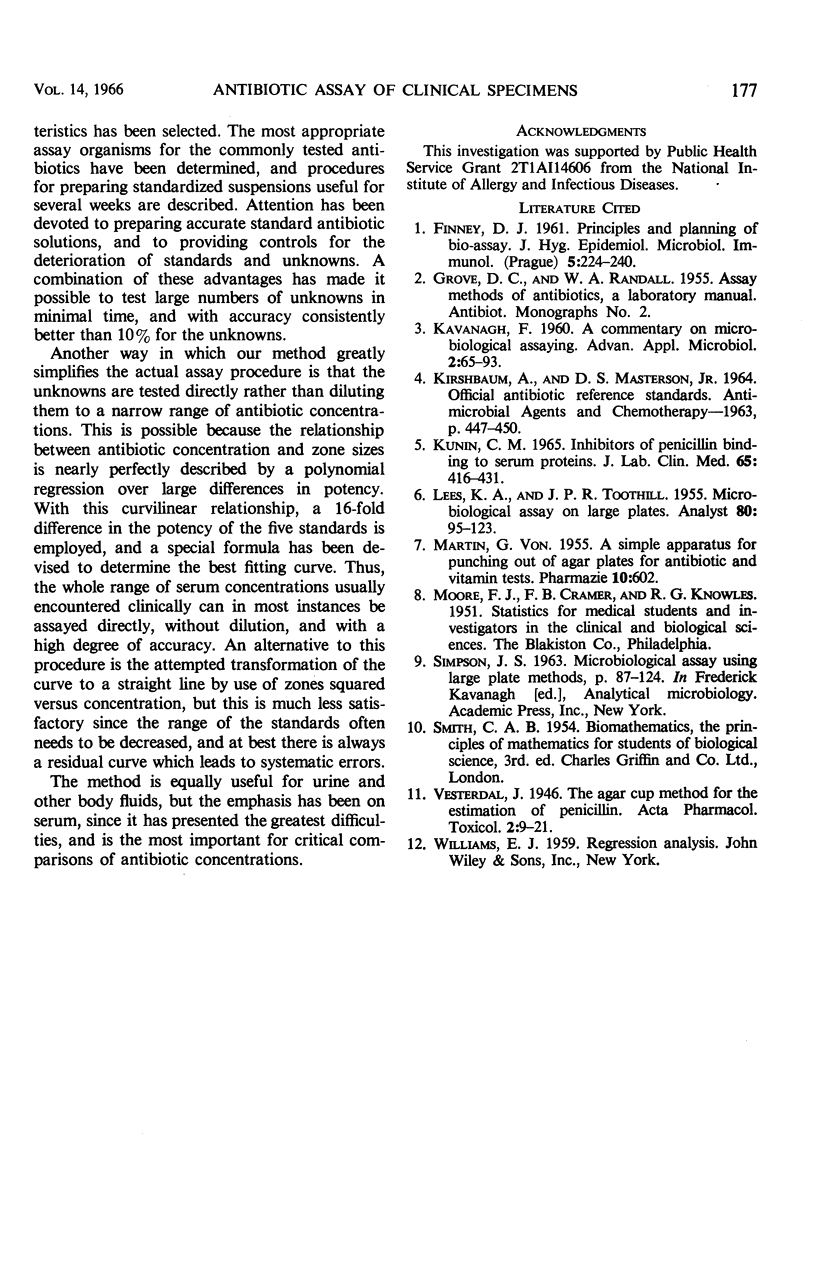
Images in this article
Selected References
These references are in PubMed. This may not be the complete list of references from this article.
- FINNEY D. Principles and planning of bio-assay. J Hyg Epidemiol Microbiol Immunol. 1961;5:224–240. [PubMed] [Google Scholar]
- KAVANAGH F. A commentary on microbiological assaying. Adv Appl Microbiol. 1960;2:65–93. doi: 10.1016/s0065-2164(08)70122-9. [DOI] [PubMed] [Google Scholar]
- KUNIN C. M. INHIBITORS OF PENICILLIN BINDING TO SERUM PROTEINS. J Lab Clin Med. 1965 Mar;65:416–431. [PubMed] [Google Scholar]
- MARTIN G. Die Elektrophorese in Agarplatten zur Trennung und autobiographischen Bestimmung von B-Vitamingruppen, Antivitamin- und Antibioticagemischen. Pharmazie. 1955 Oct;10(10):602–606. [PubMed] [Google Scholar]



